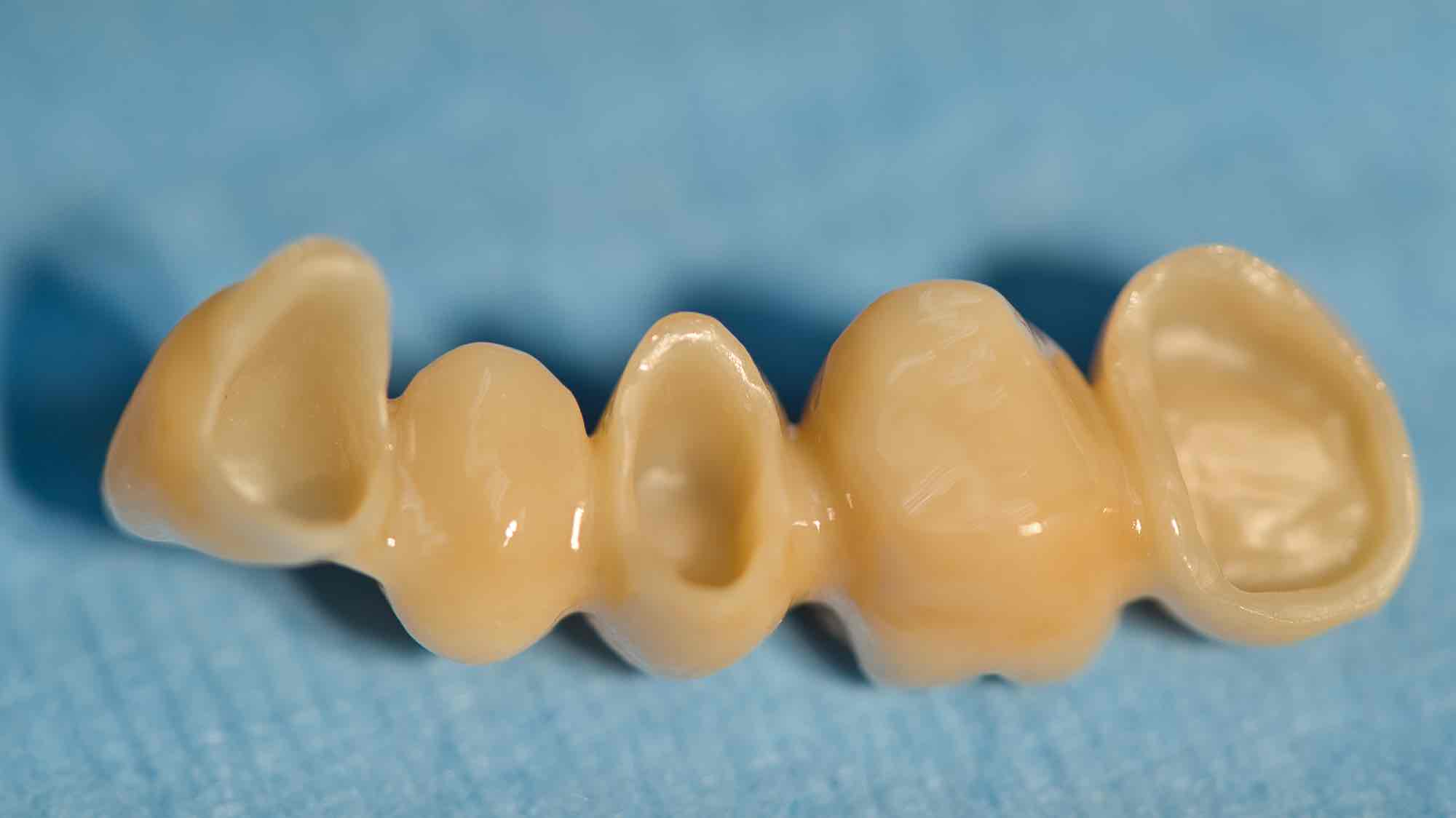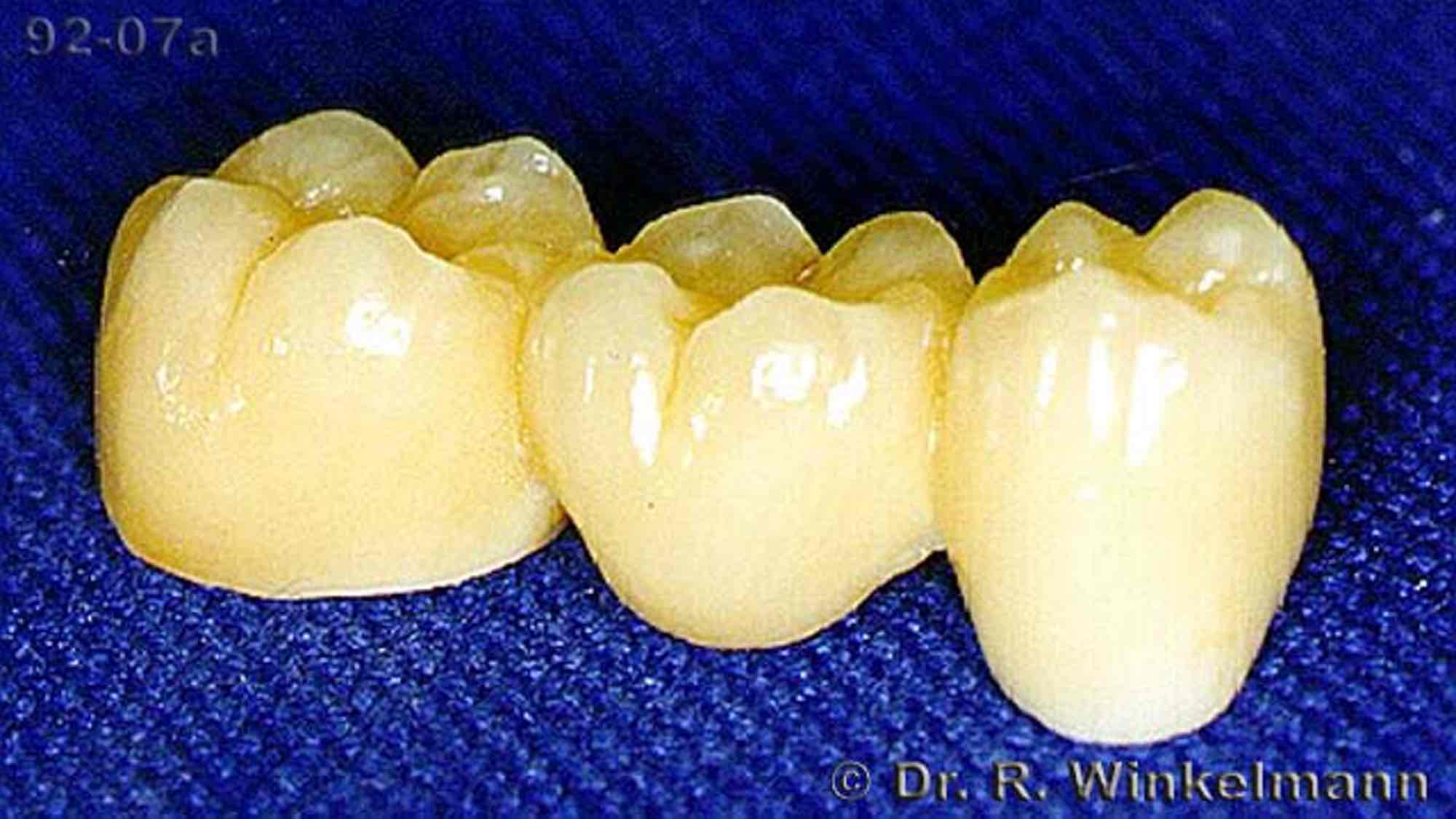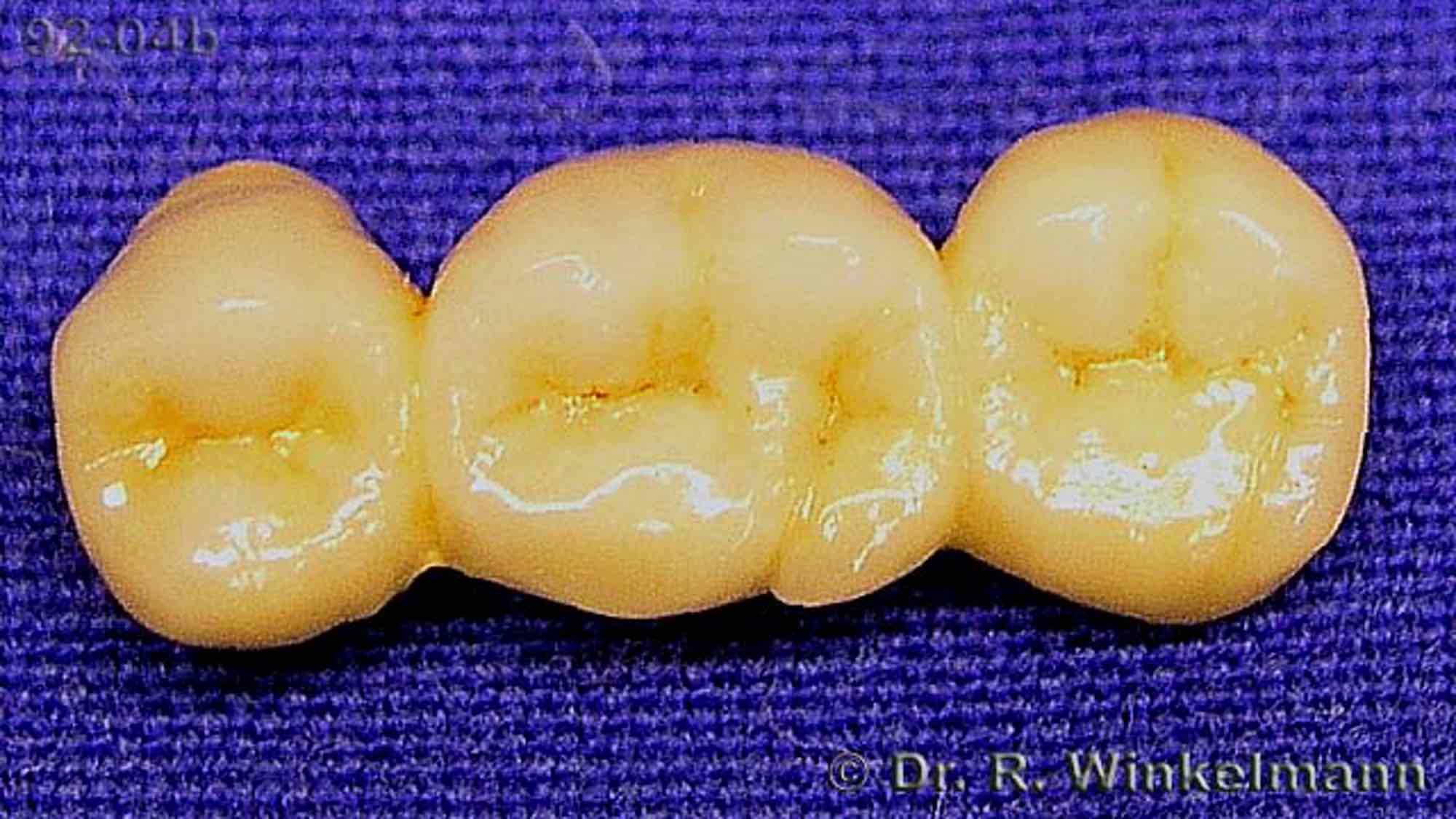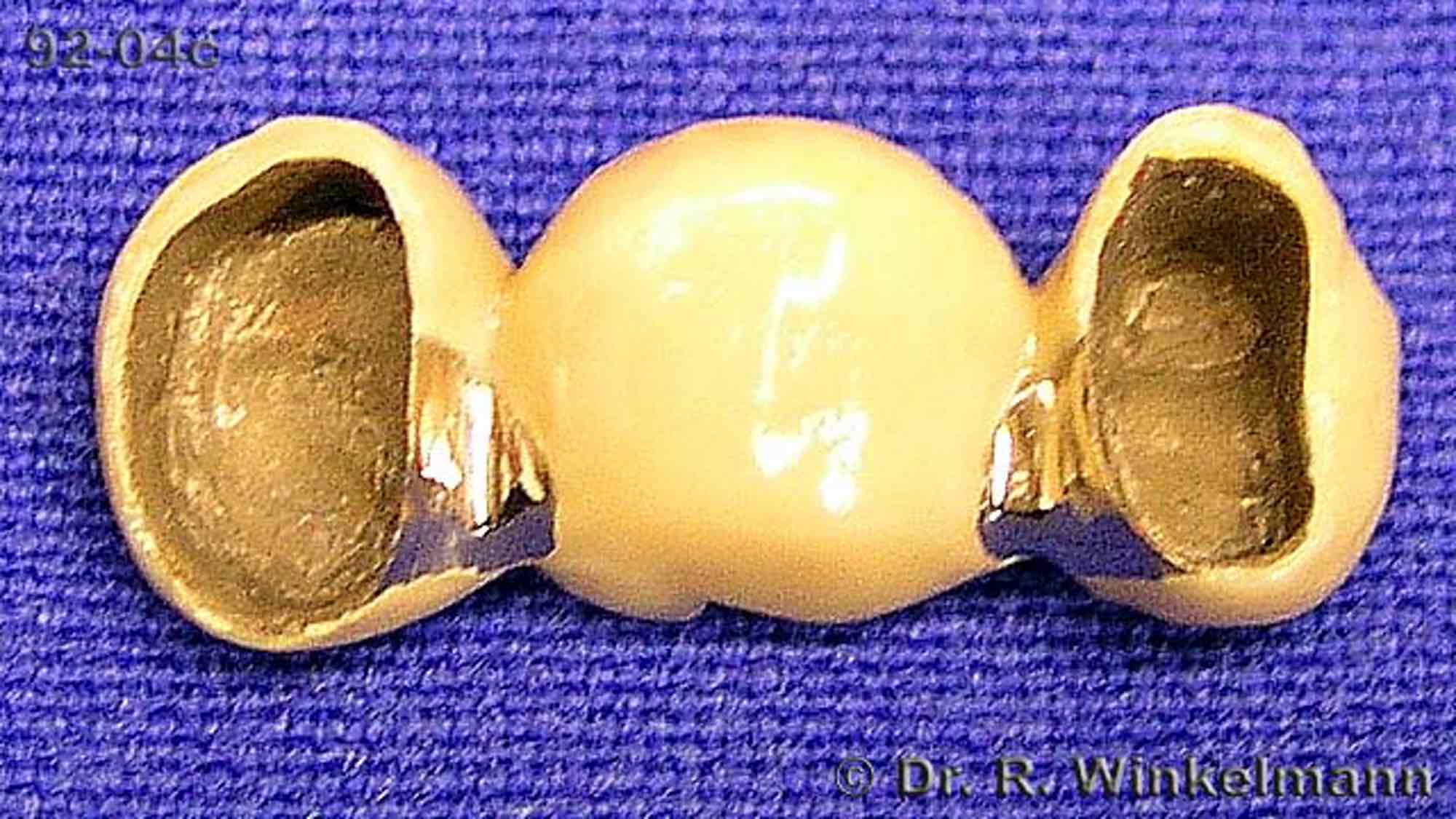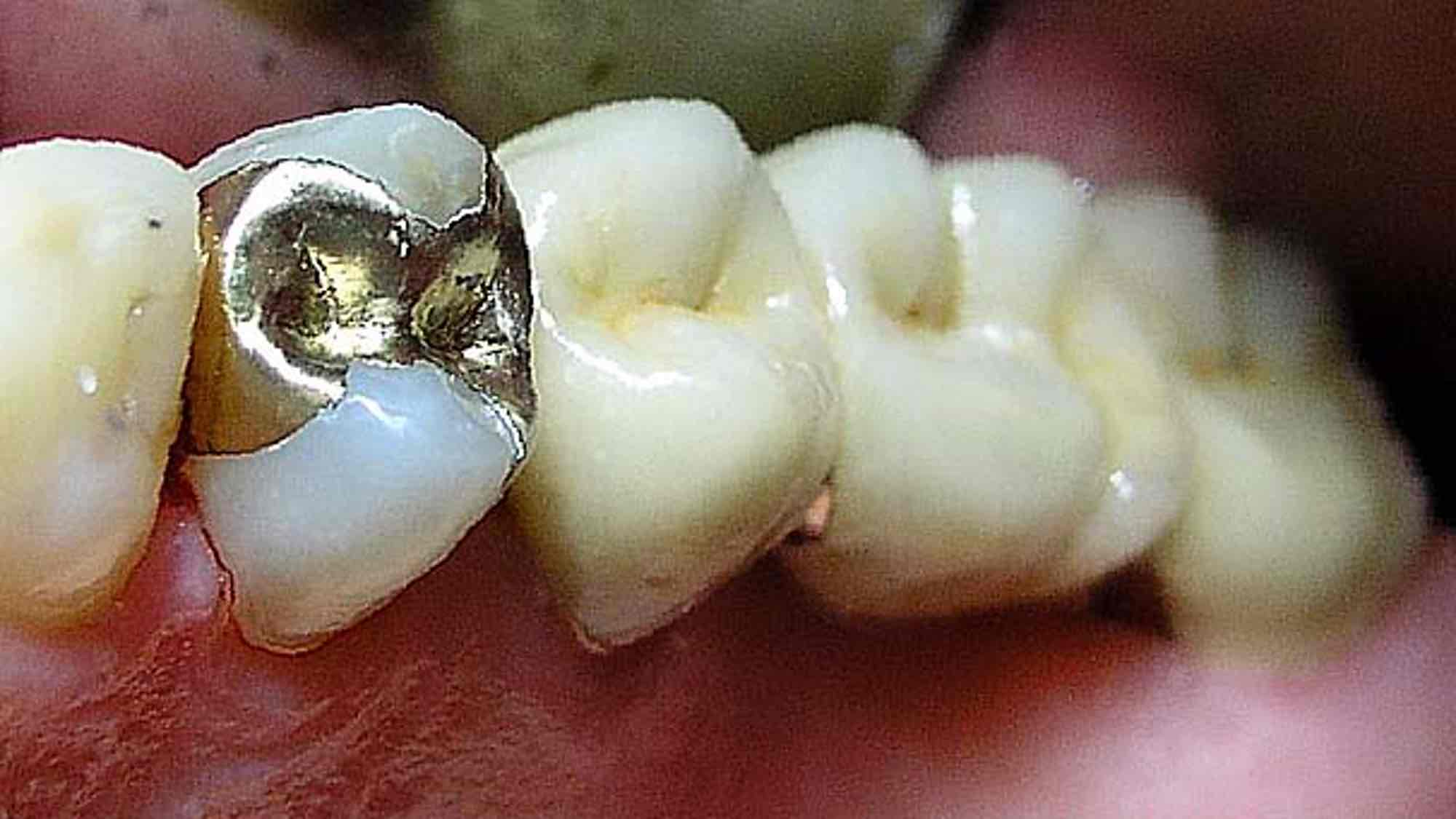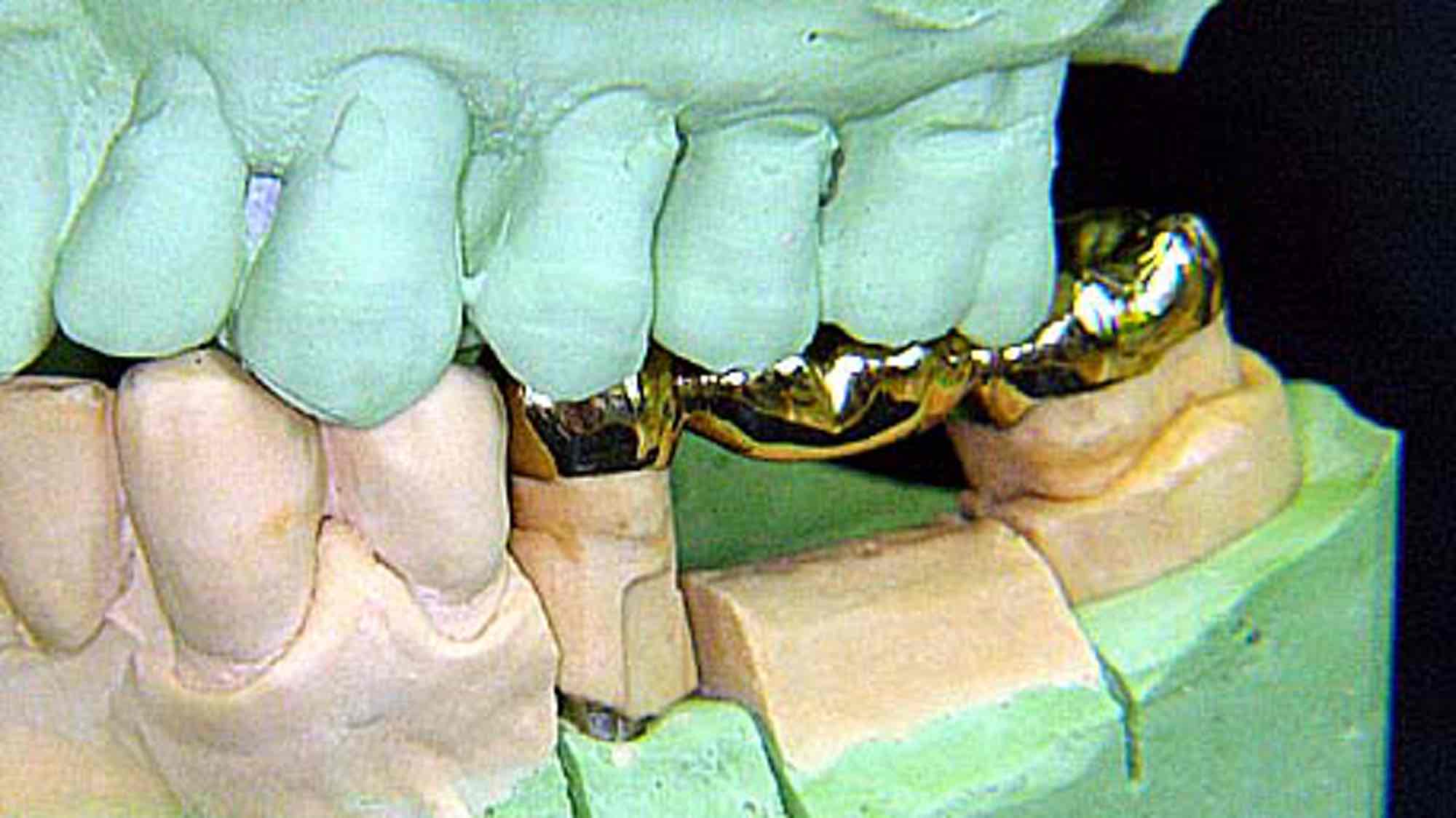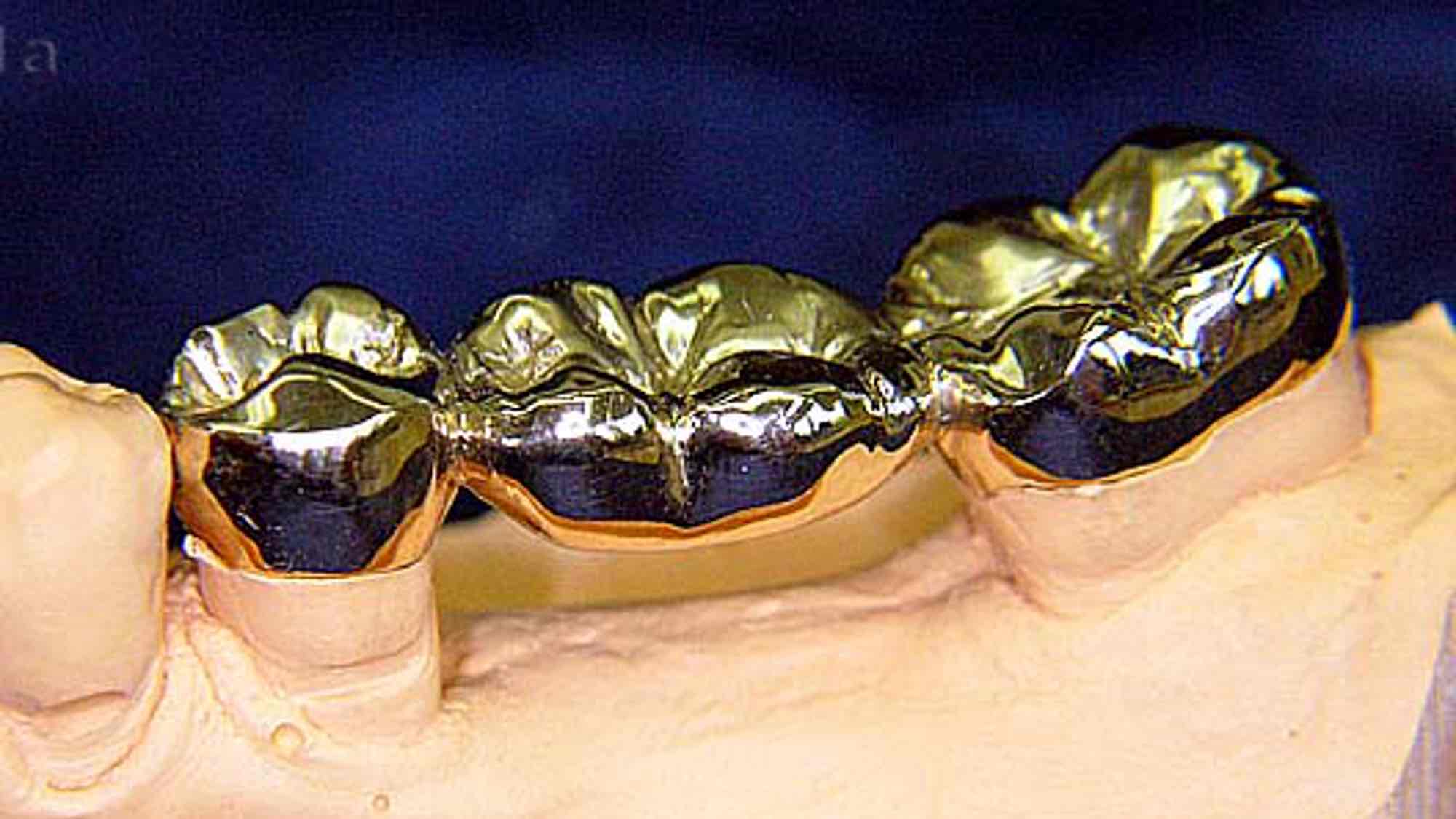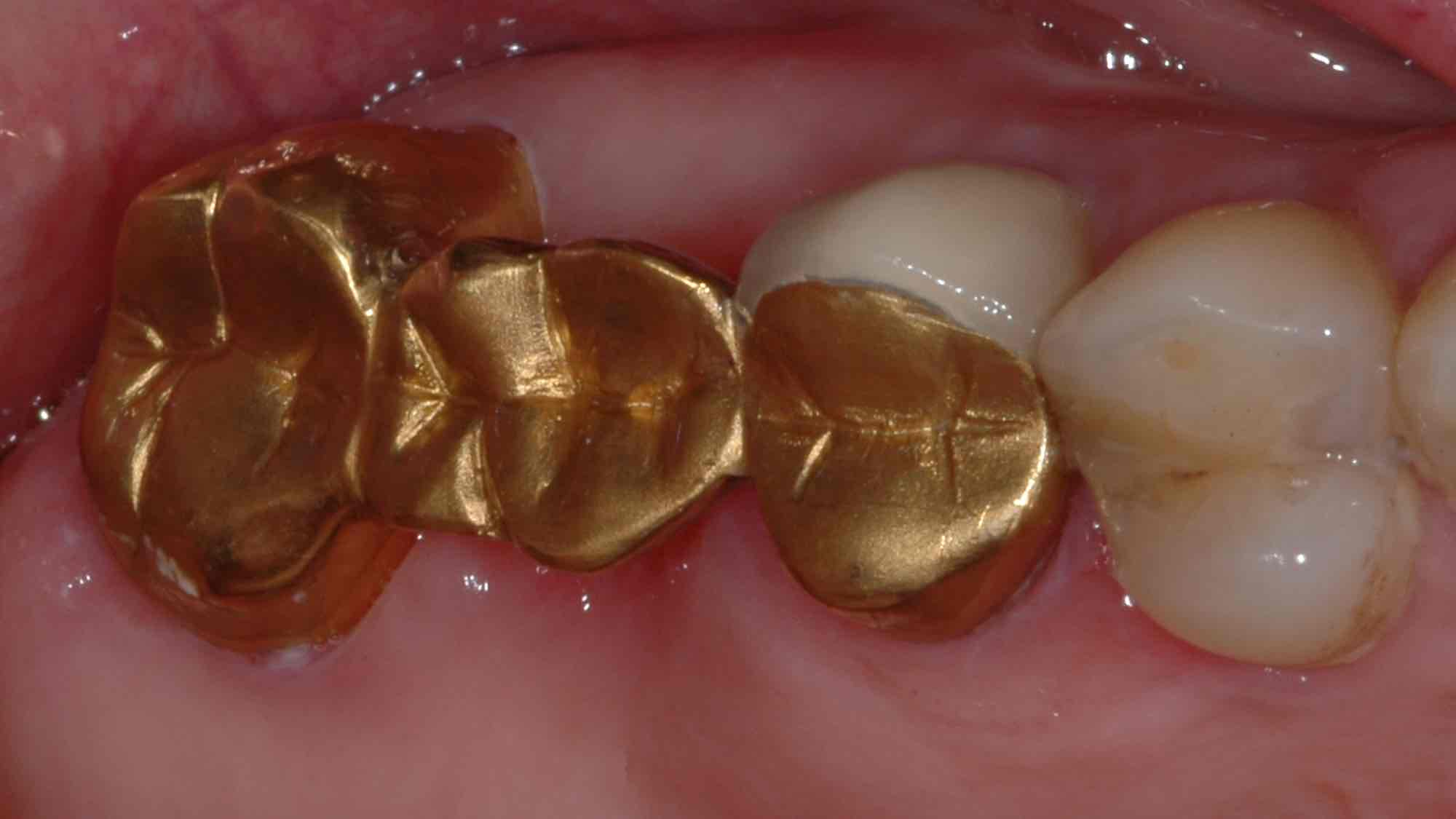Dental bridges
The loss of a tooth can not only affect aesthetics and self-confidence, but also lead to functional problems with chewing and speaking. A common method for closing such gaps is a dental bridge. Dental bridges are a restorative solution for patients who have lost one or more teeth. They bridge the gap created by tooth loss by replacing the missing teeth with artificial teeth and are attached to adjacent, intact teeth.
What is a dental bridge?
A dental bridge typically consists of three or more parts:
- Abutment teeth: The adjacent teeth that serve as “supports” for the bridge. These teeth usually need to be ground down to make room for the bridge and to ensure the bridge is securely in place.
- Pontic unit: The artificial tooth or teeth that fill the gap. This part is custom-made to fit precisely with the rest of the teeth.
- Connecting pieces: The pieces that connect the abutment teeth to the artificial teeth.
Materials for bridges
The material of choice today is zirconium! Yes, there are different types of zirconium oxide (zirconium) used in dentistry – especially for bridges, crowns, and implant prosthetics. These differ in translucency, strength, composition, and clinical application. The most important variants are:
- Classic zirconium oxide (3Y-TZP) = 3 mol% yttrium-stabilized tetragonal zirconia polycrystalline. With a flexural strength of over 1000 MPa, it is ideal for posterior bridges, especially since its color is less translucent than other zirconium variants.
- Translucent zirconium oxide (4Y-TZP) = 4 mol% yttrium oxide stabilized. This zirconium oxide is a good compromise between stability and aesthetics. Its flexural strength is 800–1000 MPa. This is the material for larger anterior bridges.
- Highly translucent zirconium oxide (5Y-TZP) = 5 mol% yttria-stabilized. Due to its high translucency, this material is perfect for anterior restorations, but due to its lower flexural strength of 600-800 MPa, it is only suitable for small bridges.
- Multilayer zirconium: This material combines different color layers in a single block to better replicate the color gradient of a natural tooth.
Dentists used to make bridges based on metal alloys. Originally, this was gold, but it quickly became apparent that pure gold was far too soft for a bridge or even a crown. Therefore, gold was alloyed with other metals. Here is a brief overview:
- High-gold alloys: These contain more than 75% gold and are very biocompatible. They are corrosion-resistant and very malleable.
- Medium-gold alloys contain 50%-75% gold. They are easy to process, but are significantly less expensive than high-gold alloys.
- Low-gold alloys contain less than 50% gold and are even more affordable than medium-gold alloys. However, their corrosion resistance is not what we would like.
- Gold-free alloys: These are usually based on palladium and silver. Very affordable, but not corrosion-resistant. We do not recommend this type of alloy.
Whether metals should be placed in the mouth at all should only be considered once it has been confirmed that the patient is not exposed to (heavy) metals.
Long-term provisionals (e.g., temporary bridges lasting several weeks to months) are now often made from millable, high-performance plastics – usually using CAD/CAM technology. These materials are biocompatible, resilient, and provide a high-quality aesthetic interim solution.
- PMMA (polymethyl methacrylate) – The classic: good aesthetics, polishable, plaque-resistant, and available in various tooth colors.
- PEEK (polyetheretherketone) – high-performance polymer: For long-term provisionals, especially in cases of bruxism or metal intolerance. Extremely stable, lightweight, temperature-resistant, and biocompatible, but less aesthetic (gray-beige), often with veneers.
- Composite-filled resins: For more aesthetically demanding long-term provisionals with higher abrasion resistance. With fillers (e.g., glass-ceramic particles) for improved strength. Better polishability than pure PMMA.
Types of bridges 1
There are different types of dental bridges, which are selected depending on the type of tooth and the location of the gap:
- Fixed bridge (traditional bridge):
– Commonly used when the gap is between two teeth.
– The bridge is attached to the adjacent teeth, which serve as abutments. - Maryland bridge (or bonded bridge):
– Often used for gaps in the front teeth.
– With this bridge, the adjacent teeth do not need to be completely ground down. Instead, the bridge is attached to the adjacent teeth with metal or ceramic wings.
– This type is less invasive and can be fabricated more quickly, but is better suited for teeth with less stress. - Implant-supported bridge:
– Here, the bridge is not attached to adjacent teeth, but rather to dental implants placed in the jawbone.
– This type offers a very stable and permanent solution, especially when the adjacent teeth are not healthy enough to serve as abutments.
– Particularly suitable for larger gaps between teeth or when missing teeth can no longer be saved. - Floating bridge:
– This type is rarely used but can be used in specific cases. The artificial tooth hangs between two adjacent teeth without the need for tooth preparation.
Types of bridges 2
There are different types of dental bridges, which are selected depending on the type of tooth and the location of the gap:
- Fixed bridge (traditional bridge):
– Commonly used when the gap is between two teeth.
– The bridge is attached to the adjacent teeth, which serve as abutments. - Maryland bridge (or bonded bridge):
– Often used for gaps in the front teeth.
– With this bridge, the adjacent teeth do not need to be completely ground down. Instead, the bridge is attached to the adjacent teeth with metal or ceramic wings.
– This type is less invasive and can be fabricated more quickly, but is better suited for teeth with less stress. - Implant-supported bridge:
– Here, the bridge is not attached to adjacent teeth, but rather to dental implants placed in the jawbone.
– This type offers a very stable and permanent solution, especially when the adjacent teeth are not healthy enough to serve as abutments.
– Particularly suitable for larger gaps between teeth or when missing teeth can no longer be saved. - Floating bridge:
– This type is rarely used but can be used in specific cases. The artificial tooth hangs between two adjacent teeth without the need for tooth preparation.
Advantages and disadvantages of bridges
With bridges, gaps can be aesthetically closed and smiles reconstructed in a short time. Implant restorations require significantly longer periods. The function can usually be optimized so well that the patient feels like they are chewing on their own teeth, which is truly optimal. And the best part: nothing is removable; everything is fixed and stable! The costs are lower than with implant restorations.
For a bridge, we have to grind down the adjacent teeth (explicitly: NOT grinding them down—that’s a completely different matter): we remove approximately 0.5–1.2 mm of tooth structure to create enough space for the bridge material. That’s very little… one more reason why we need magnifying glasses for this. If the neighboring teeth already have fillings or crowns, then the indication for a bridge is easily established. However, if these teeth are naturally healthy, i.e., without any form of restoration, then implant restoration should be considered.
Bridges are more difficult to clean than natural teeth… of course: because a bridge consists of several teeth connected together, you can’t reach through the gaps with regular dental floss. But there are solutions.
You can find online estimates for bridges to have a lifespan of 10-15 years. We have patients who have had their bridges for 40 years, which is not uncommon. Home and professional dental hygiene are crucial for their longevity.
Finally
If you want to join the winning side, then visit your dentist regularly for preventative care. They’ll also explain your weaknesses when brushing your teeth (dentists have these too!) and what you can do better. And this won’t be explained to you by a health column in the newspaper, but by someone who knows the subject inside out!
Author: drw
If you want to know more…
Advances and challenges in zirconia-based materials for dental applications
🔗 https://link.springer.com/article/10.1007/s43207-024-00416-7
Survival of zirconia- and metal-supported fixed dental prostheses: a systematic review
🔗 https://www.nature.com/articles/sj.bdj.2011.263
Strength of zirconia fixed partial dentures: review of the literature
🔗 https://www.ncbi.nlm.nih.gov/pmc/articles/PMC3399177/
Fatigue of Zirconia and Dental Bridge Geometry: Design Implications
🔗 https://www.ncbi.nlm.nih.gov/pmc/articles/PMC2967591/
Five-year clinical evaluation of zirconia-based bridges in UK general dental practices
This bridge is made of milled zirconia. This series offers the best biocompatibility, best aesthetics, and best precision. This makes it our favorite!
Even from the back, you can see that everything is made of solid material.
This is an all-ceramic bridge made of a material we used over 30 years ago, but which is no longer relevant today. This material was also milled and offers high transparency.
Here is an example of a PFM bridge: porcelain fused to metal. A base framework made of a metal alloy (in this example, a high-gold alloy) was veneered with ceramic materials to create the most natural appearance possible. However, aesthetically, this version can’t compete with today’s zirconium bridges. PFM bridges are outdated.
This is a floating bridge made of a high-gold alloy. It’s clear that the tooth itself hasn’t been reconstructed, but rather only the chewing surface. This bridge construction is also outdated.


